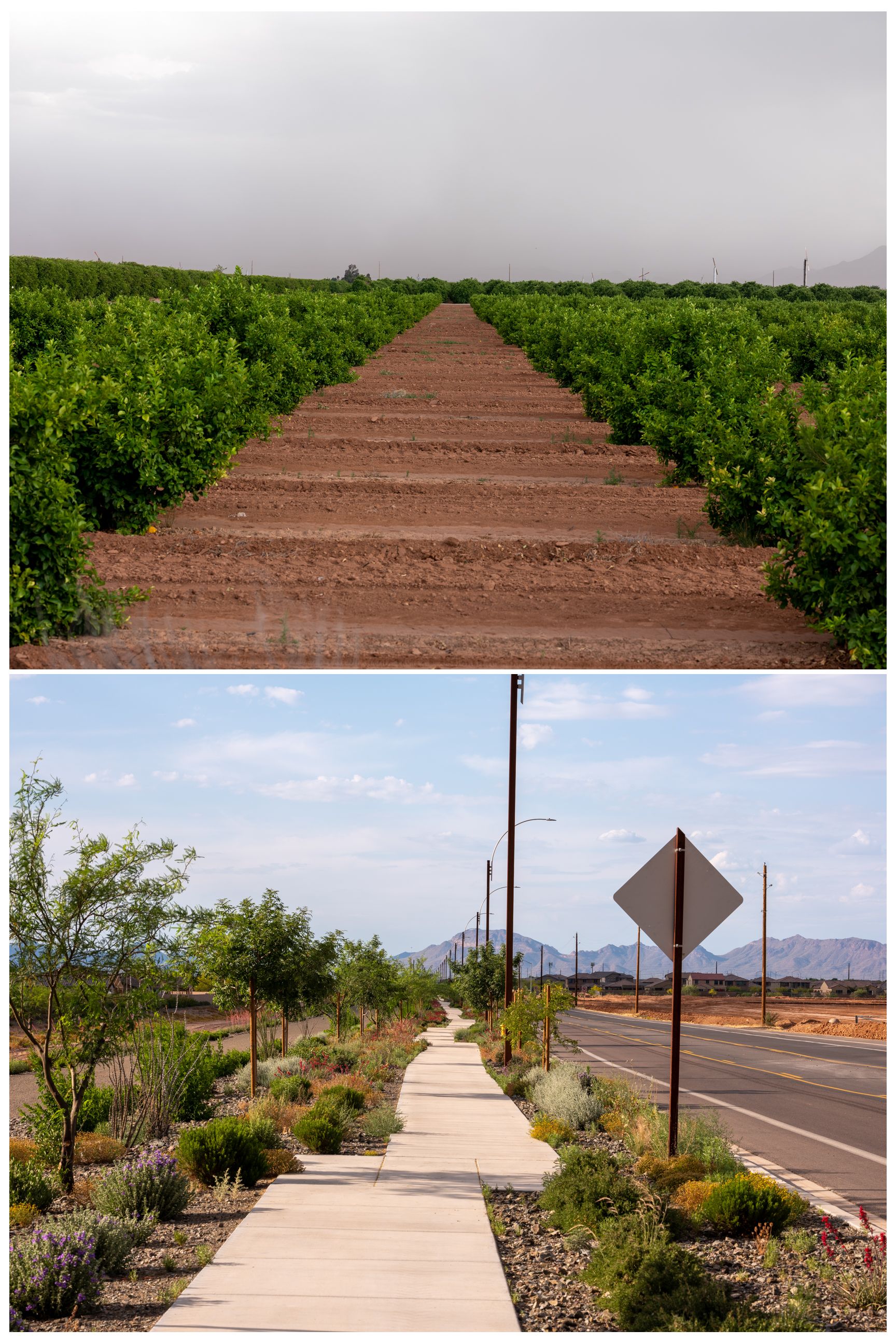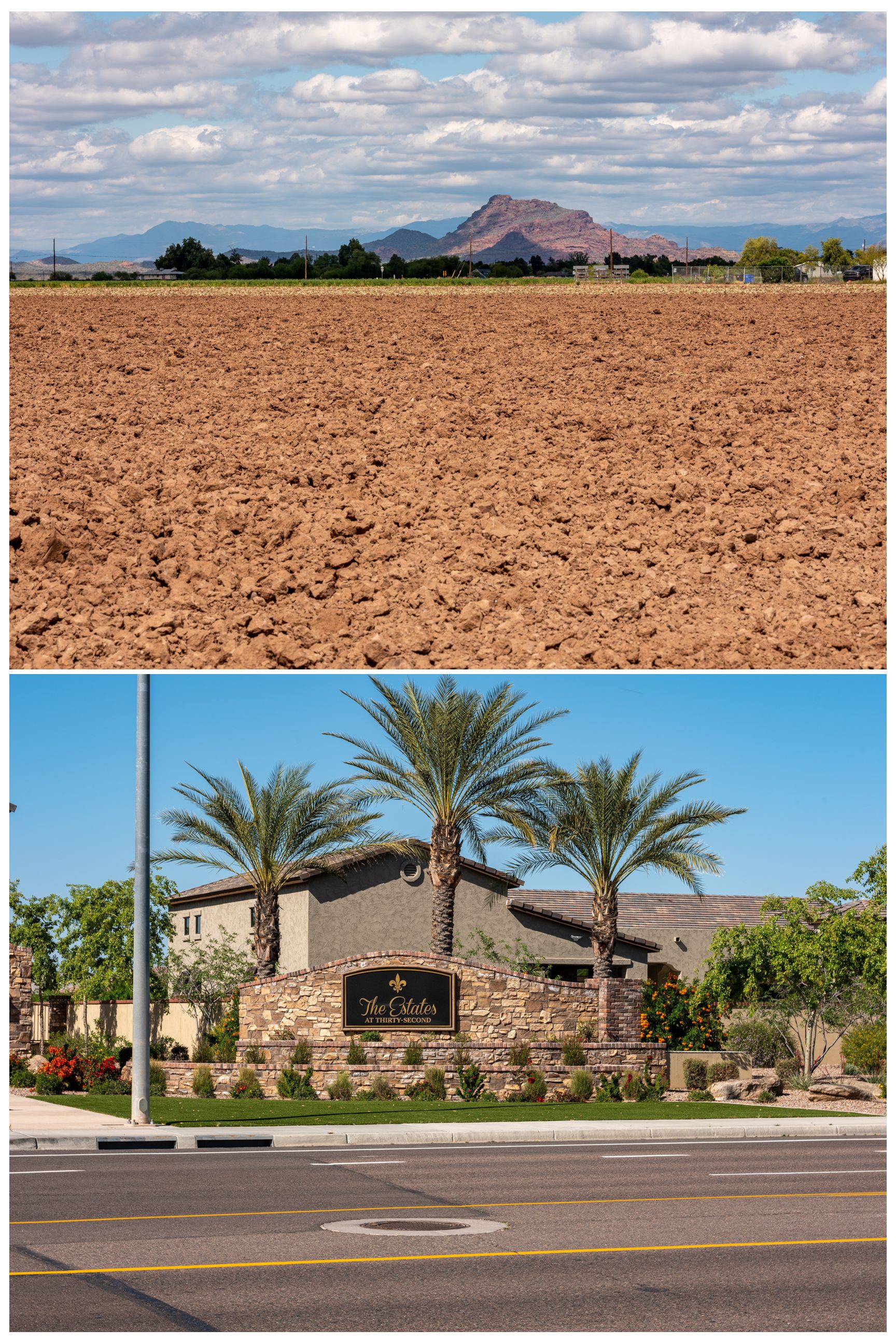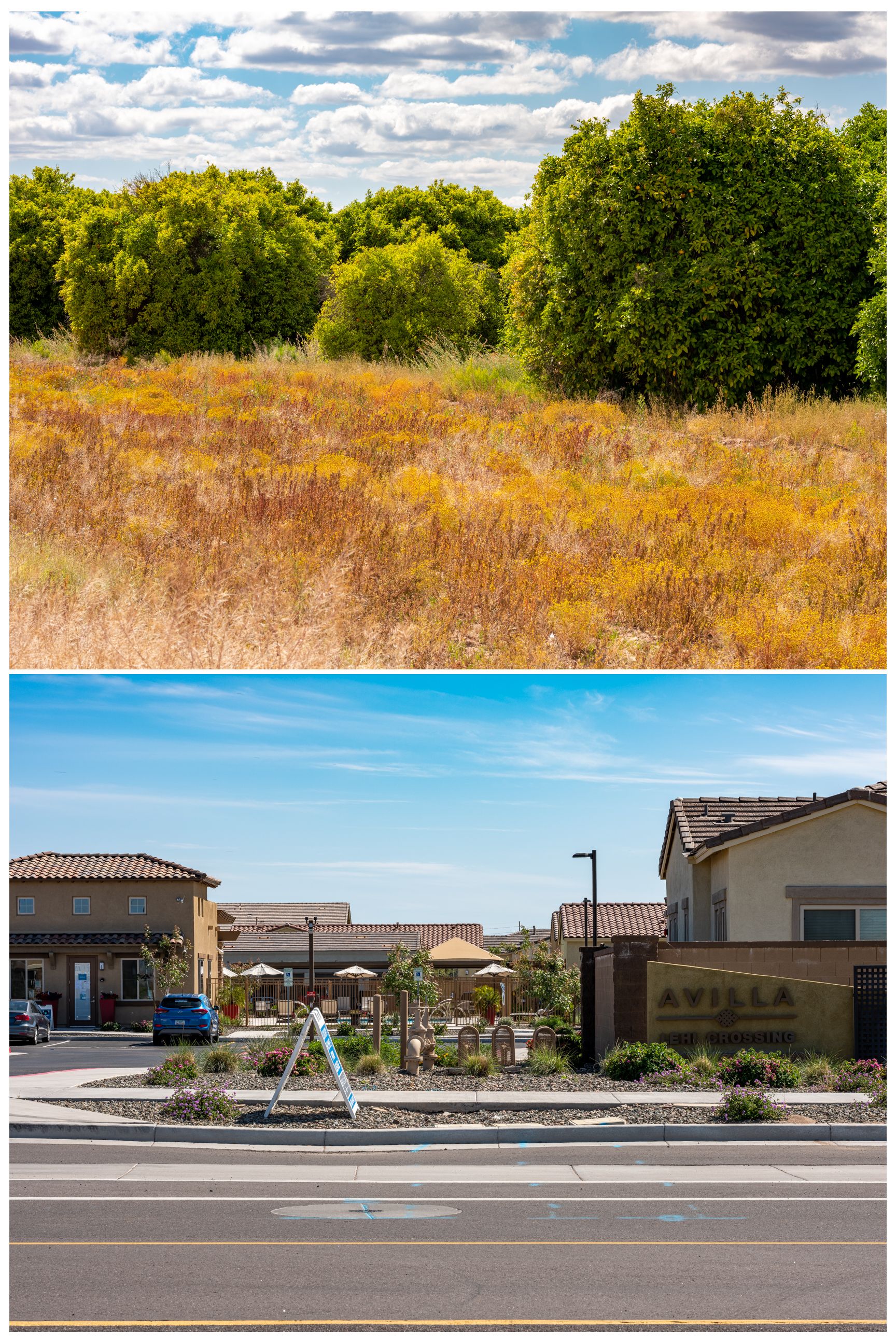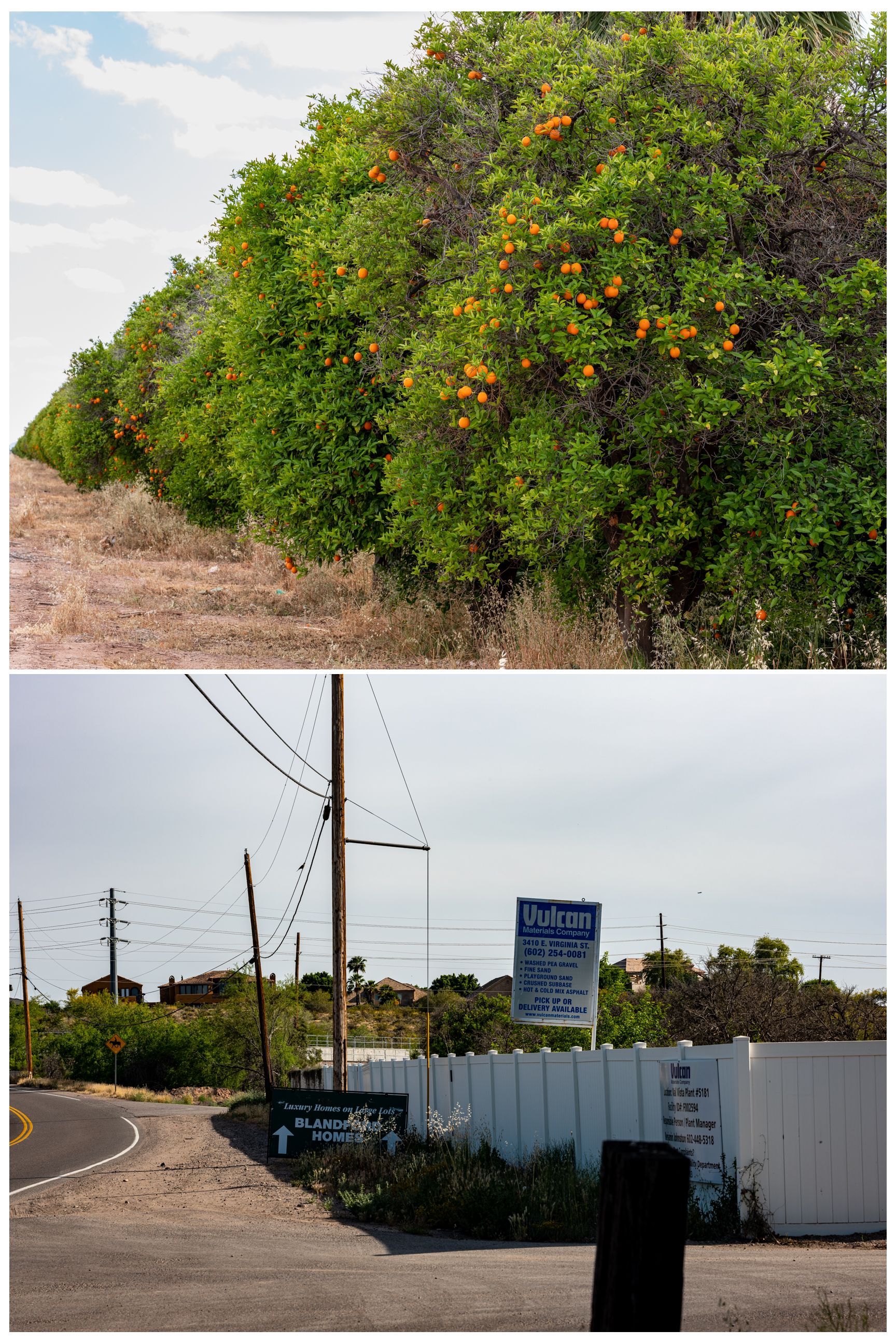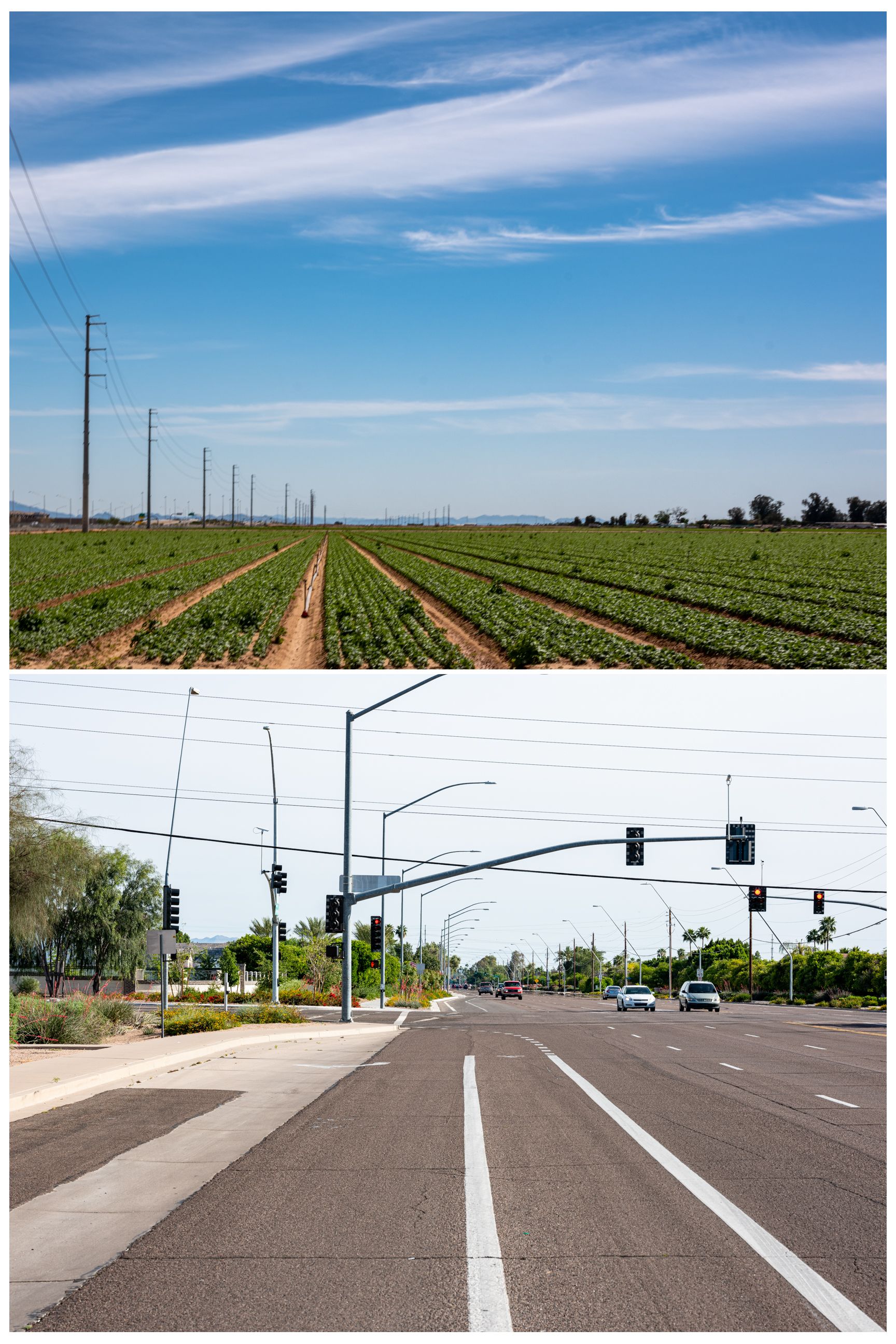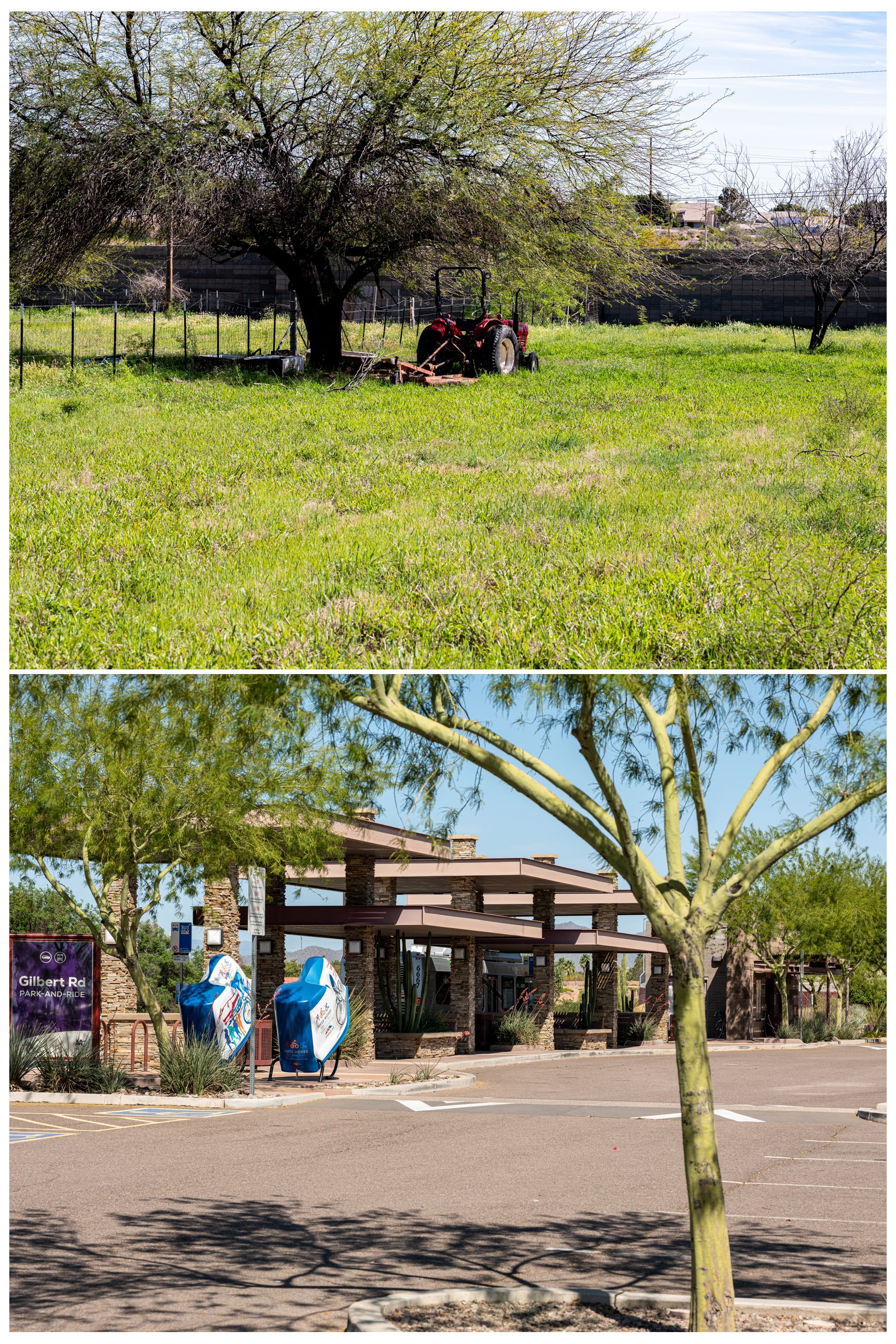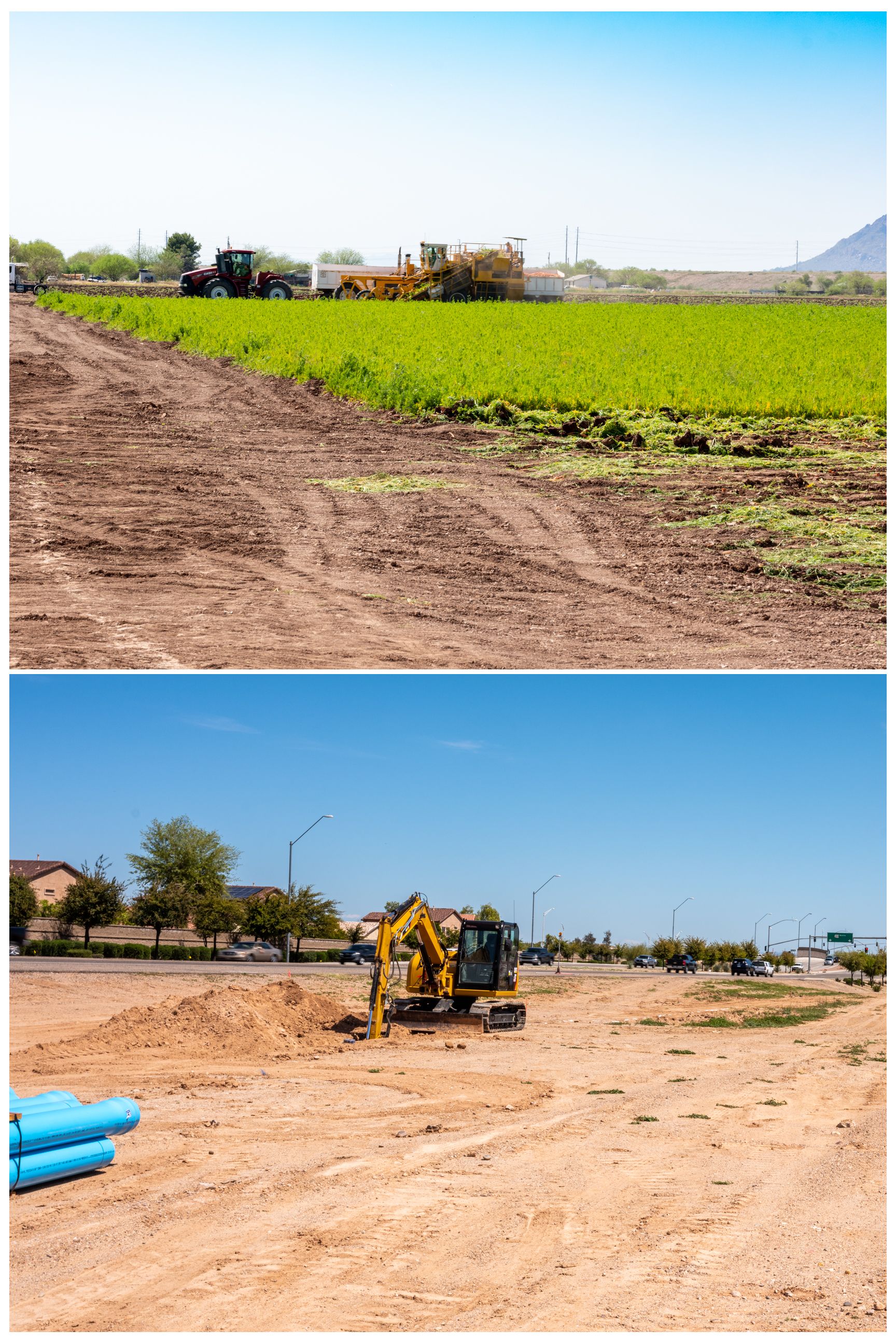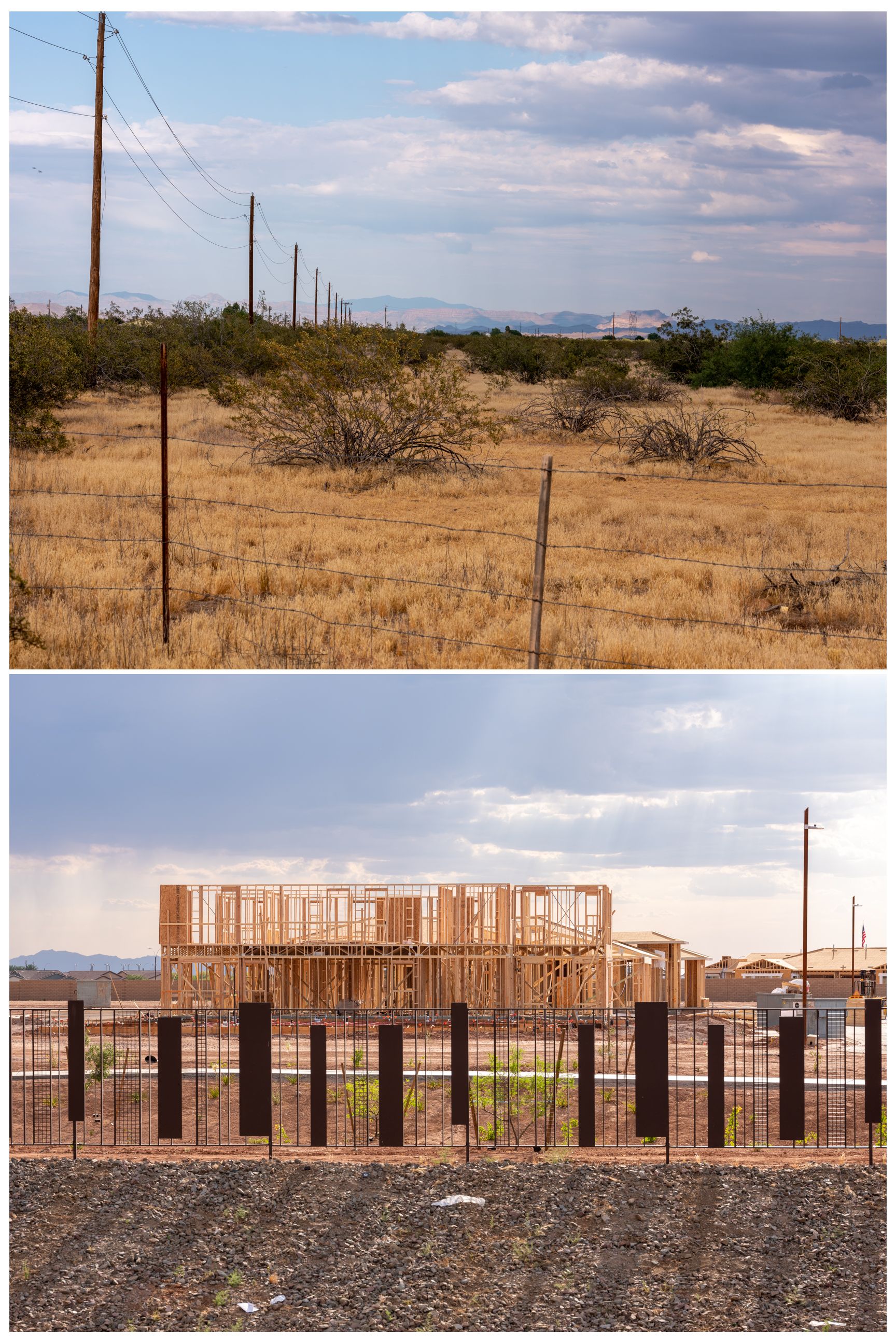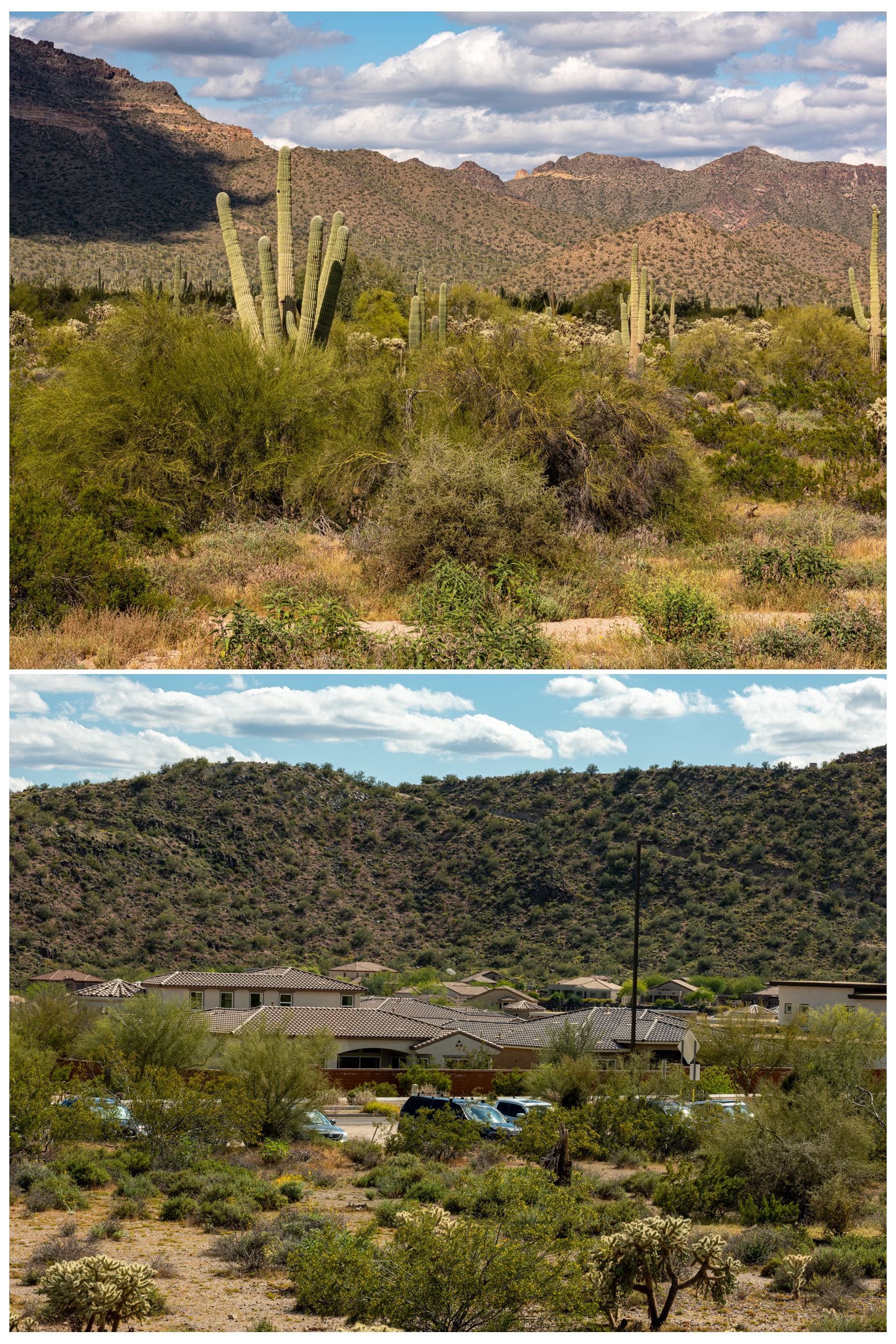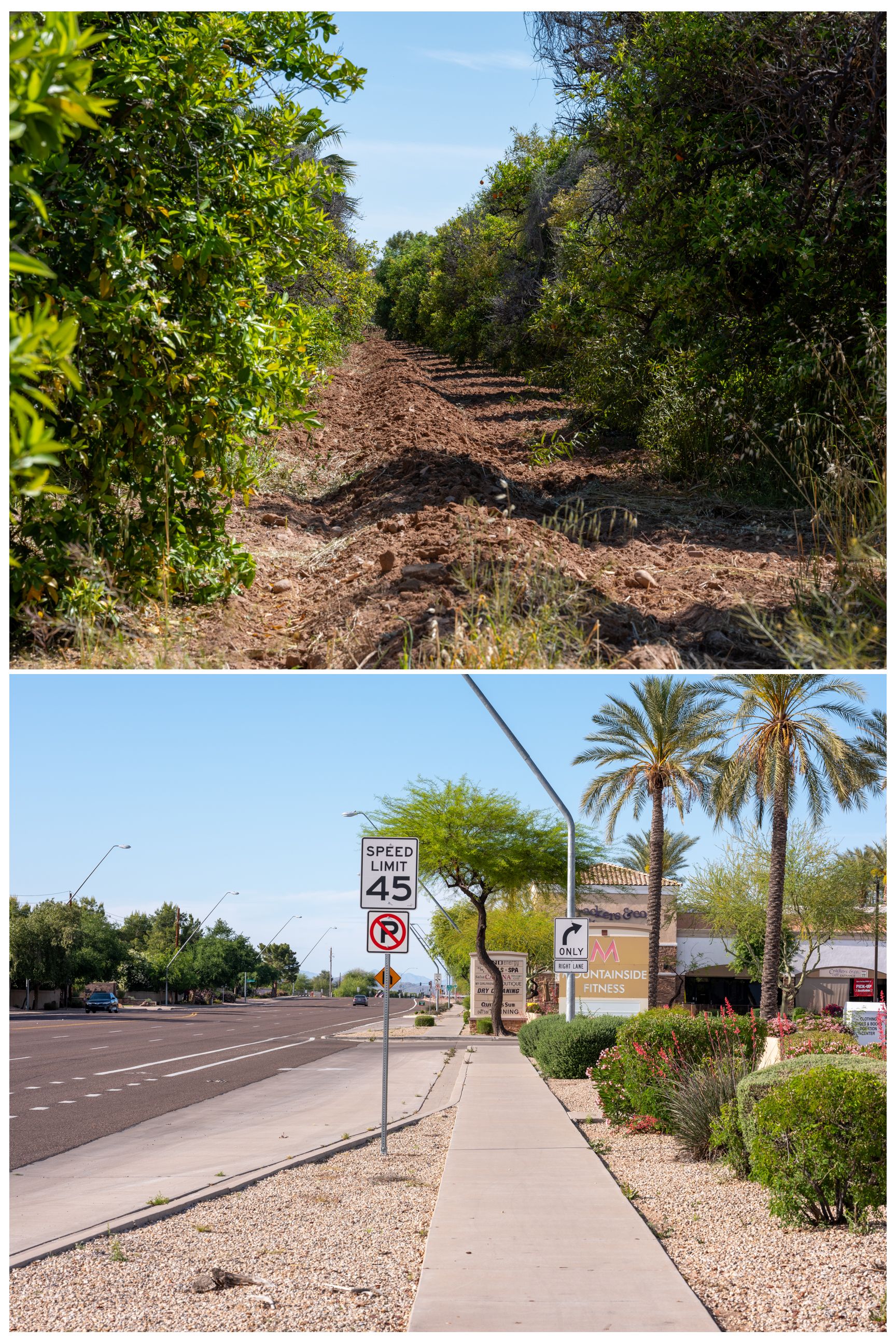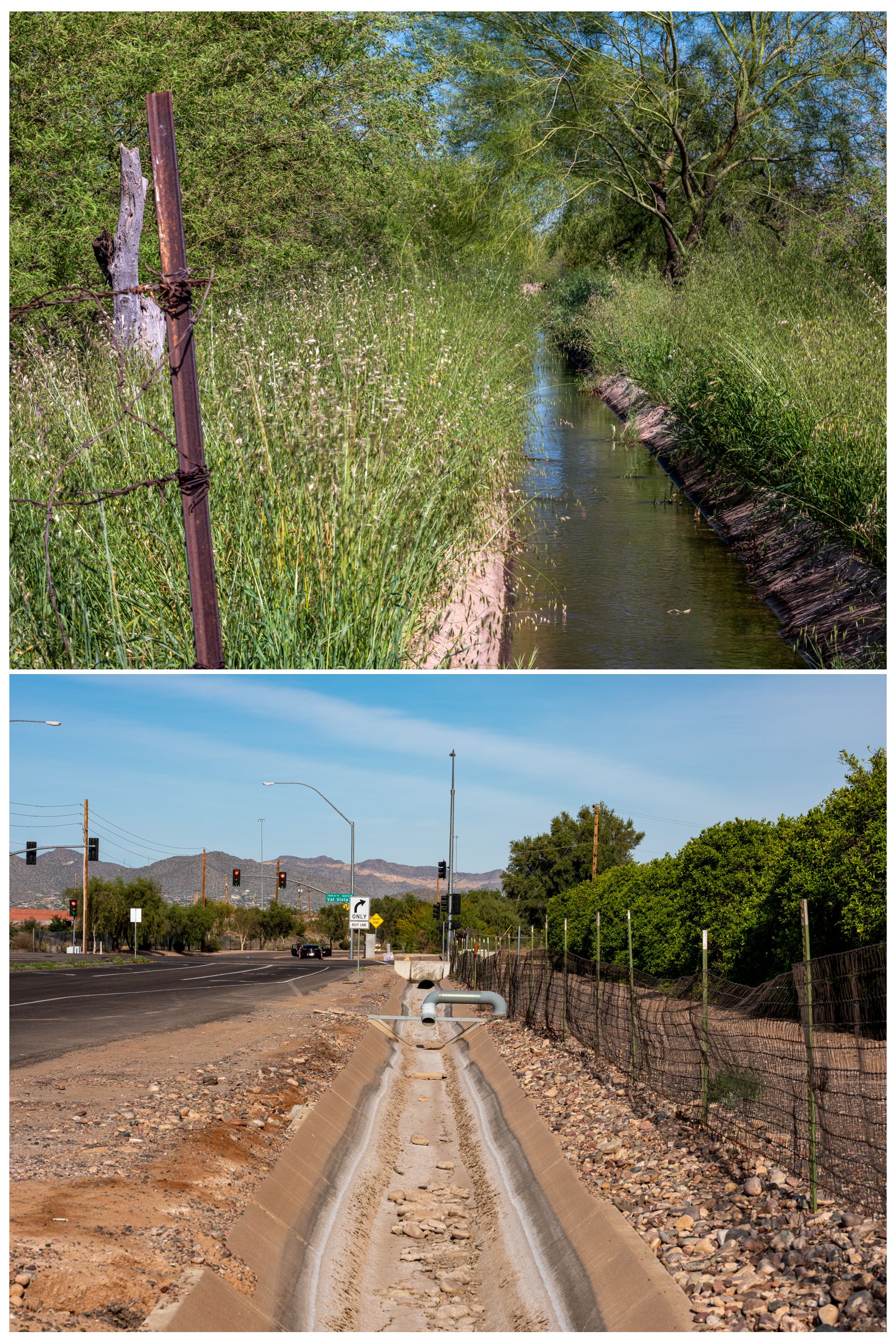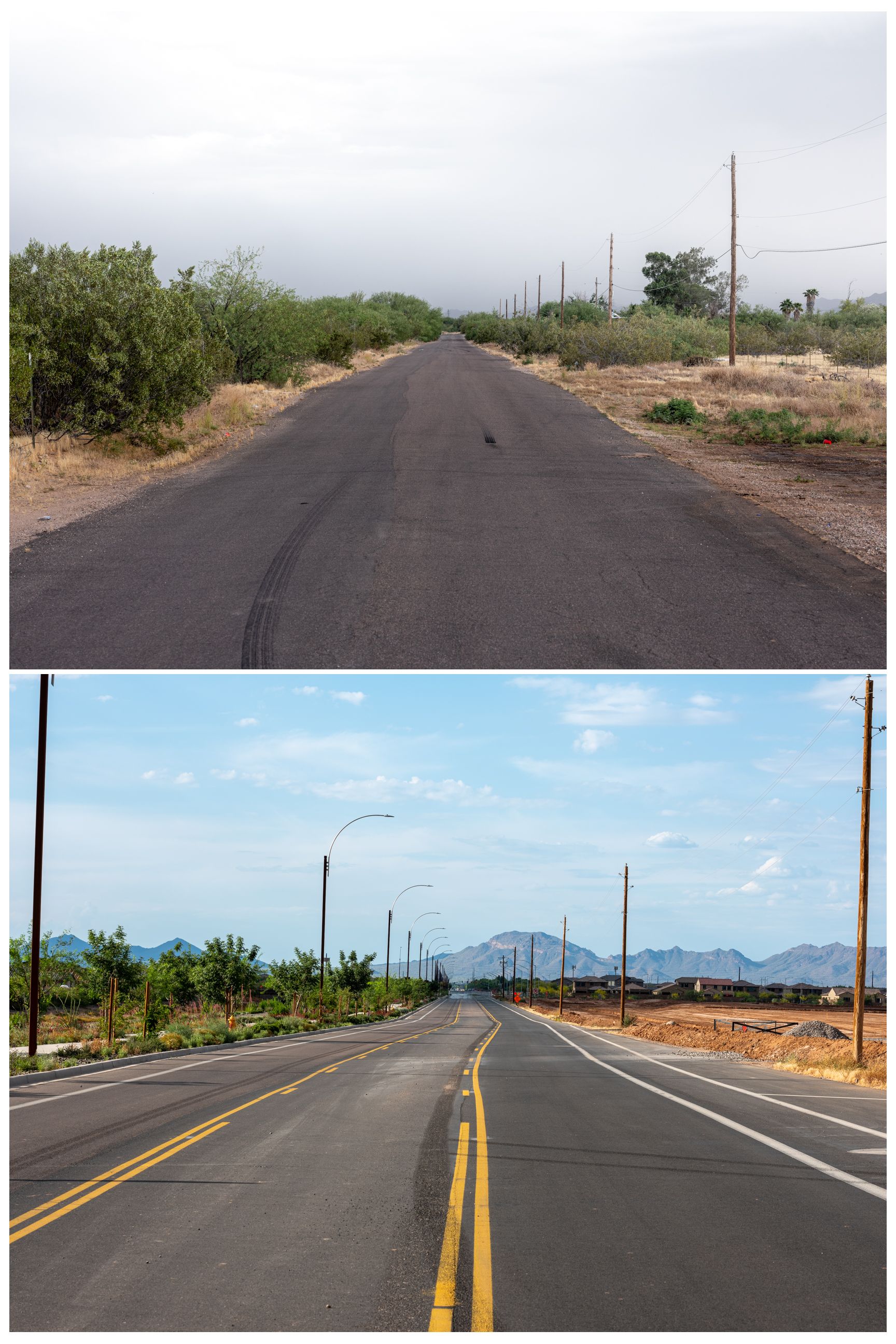Urbanization
This current project reflects on the rapid evolution of the Metropolitan Phoenix area, tracing its transformation from the simplicity of rural farmlands to the complexity of an emerging urban landscape. With the population burgeoning to 6.3 million, Phoenix stands as the fourth most populous city in the United States, a testament to its relentless expansion and development.
Through a series of thoughtfully paired diptychs, the series documents the stark juxtaposition of old and new: the traditional life of farming and livestock against the relentless march of industrial and technological growth. The diptychs serve as a visual dialogue between the untouched expanses of the desert and the encroaching tides of residential and commercial edifices. Places like Surprise, Queen Creek, and San Tan Valley epitomize this metamorphosis, where once-sparse lands are now sites of burgeoning businesses and homes.
The project is not merely a chronicling of changes in the landscape but a commentary on the psychological and societal impacts of such growth. The intent is to illuminate the duality of progress—the convenience and economic benefit that urban development brings, weighed against the loss of the community's pastoral heritage. This work questions what is gained and what is irretrievably lost in the pursuit of advancement and modernity.
My photographic technique, rooted in the genre of lyrical documentary, allows for a vivid and sharp portrayal of this social landscape. The aesthetic choices in post-processing—leveling for open spaces and sharpening for urban structures—intensify the visual dichotomy. The consistent eye-level perspective invites viewers to stand at the precipice of change, providing a shared vantage point from which to observe these transformations.
This project aims to provoke a societal reflection beyond mere aesthetics. It seeks to engender a social awareness of the physical and psychological spaces we inhabit and mold. By placing contrasting images side by side, I confront the viewer with the tangible reality of growth, offering a powerful visual testament to the sacrifices made on the altar of progress.
This body of work challenges us to consider the nuanced impact of economic and demographic shifts on our collective psyche. The photographs do not merely capture scenes but evoke the inherent tension between progress and loss, inviting a contemplation that words alone cannot convey. Through this visual lexicon, I implore us to acknowledge the silent exchange between the convenience of the new and the charm of the old, fostering an undeniable accountability for the landscapes we alter.
